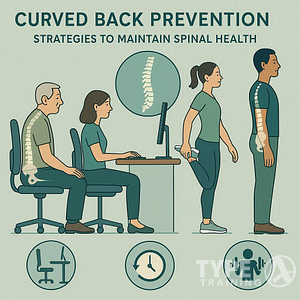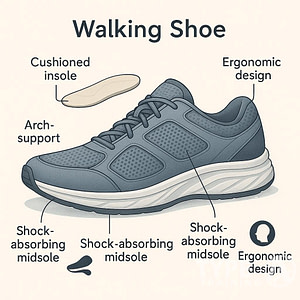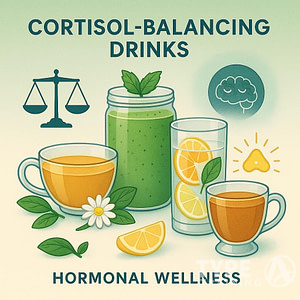The ketogenic diet is a low-carb, high-fat eating plan that has gained popularity for its potential health benefits, especially for women. Following the keto diet, women can experience weight loss, improved metabolism, and balanced hormones. However, understanding how to tailor this diet to your specific needs is essential for success and long-term sustainability.
Unlike men, women may face unique challenges on the keto diet due to hormonal fluctuations and different nutritional requirements. This makes it crucial to adapt the keto approach by monitoring your energy levels, nutrient intake, and overall well-being. Adjusting your diet to fit these needs can help you achieve better results and maintain a healthy lifestyle.
Incorporating nutrient-dense, keto-friendly foods like avocados, nuts, and leafy greens ensures that your body receives the necessary vitamins and minerals. Additionally, staying well-hydrated and balancing your macronutrient ratios can aid in maintaining optimal heart health and energy levels. By addressing these factors, you can navigate the keto diet effectively and enjoy its benefits.
Popular posts:
Key Takeaways
- Keto diet aids in weight loss and hormone balance for women.
- Women may need to adapt the keto diet to their specific needs.
- Nutrient-dense foods and hydration are crucial for success.
Understanding the Keto Diet
The keto diet is based on the principle of drastically reducing carbohydrates and increasing fats to enter a metabolic state called ketosis. Here, you’ll learn about the mechanics of ketosis, the essential macronutrient ratios, and the various types of ketogenic diets.
The Basics of Ketosis
Ketosis occurs when your body changes its energy source from carbohydrates to fats. When you limit carb intake to around 20-50 grams per day, your liver converts fats into ketones, which become your main energy source. This metabolic state helps burn fat more effectively.
The transition into ketosis typically takes a few days to a week, depending on your previous diet. You can monitor ketone levels using tools like urine strips or blood meters.
Macronutrient Ratios: Fats, Proteins, and Carbs
On a keto diet, fats should make up about 70-80% of your daily calories. Meanwhile, proteins should account for 20-25%, while carbs are limited to 5-10%. High-fat foods include avocados, nuts, and oils.
Proteins should come from lean sources like chicken breast or fish. It’s crucial to maintain these ratios to stay in ketosis, as too many carbs or proteins can disrupt this metabolic state.
Types of Ketogenic Diets
Several versions of the keto diet cater to different needs:
- Standard Ketogenic Diet (SKD): High fat, moderate protein, very low carb.
- Cyclical Ketogenic Diet (CKD): Periods of higher-carb refeeds, like 5 ketogenic days followed by 2 high-carb days.
- Targeted Ketogenic Diet (TKD): Allows carbs around workouts.
- High-Protein Ketogenic Diet: More protein, often at a ratio of 60% fat, 35% protein, and 5% carbs.
Each type has its own benefits and may suit different lifestyles or fitness goals.
Keto Diet Benefits for Women
The keto diet has been shown to support hormonal balance, aid in weight management, and even improve fertility. These benefits are particularly significant for women dealing with menopause and polycystic ovary syndrome (PCOS).
Hormonal Balance and Menopause
Hormonal changes during menopause can lead to weight gain, hot flashes, and mood swings. A keto diet may help stabilize hormones by reducing insulin levels and lowering inflammation. Healthy fats from foods like avocados and nuts support hormone production.
Lower carbohydrate intake on the keto diet helps maintain more stable blood sugar levels. This reduction in blood sugar fluctuations can alleviate some menopause symptoms, making it easier to manage day-to-day life.
PCOS and Fertility Concerns
For women with PCOS, the keto diet may improve symptoms and support fertility. PCOS can cause irregular menstrual cycles, insulin resistance, and weight gain. Low-carb, high-fat diets like keto can lower insulin resistance, which is a significant factor in managing PCOS.
The keto diet’s focus on whole, nutrient-dense foods can also support hormonal balance. By helping to regulate insulin levels, the diet may promote more regular ovulation and improved fertility outcomes.
Weight Management and Fat Loss
Weight management is a common concern for many women, and the keto diet can be an effective tool for fat loss. By drastically reducing carbohydrate intake and increasing healthy fats, your body shifts into ketosis, a state where fat is burned for energy.
Research suggests that women on a keto diet can see significant reductions in body fat compared to traditional low-fat diets. The high fat and moderate protein intake help preserve muscle mass while promoting fat loss. This can lead to more sustainable, long-term weight management.
A well-structured keto diet emphasizes the consumption of whole foods. This not only aids in weight loss but also contributes to overall health and wellbeing by reducing processed food intake.
Common Challenges and Solutions
When following a keto diet, women may encounter specific challenges such as keto flu, managing blood sugar levels, and considerations during pregnancy and breastfeeding. Below, each challenge is addressed with practical solutions.
Addressing Keto Flu and Cravings
Keto flu manifests as fatigue, headaches, and irritability during the initial phase of the diet. To alleviate these symptoms, ensure you stay hydrated and consume sufficient electrolytes. Include foods rich in potassium, magnesium, and sodium like leafy greens, nuts, and avocados in your meals. This electrolyte balance helps mitigate symptoms.
Cravings for carbs are common. Combat them by eating high-fat, low-carb snacks such as cheese, nuts, or olives. Incorporating intermittent fasting can also help reduce cravings by stabilizing your hunger hormones.
Managing Blood Sugar and Diabetes
For women with type 2 diabetes, the keto diet offers the benefit of improving blood sugar control. By restricting carbohydrate intake, your blood sugar levels become more stable, reducing the need for insulin or other medications. It’s crucial to monitor your blood sugar regularly and adjust your medication under medical supervision.
Focus on high-fiber vegetables and lean proteins to keep your meals balanced. Regular exercise complements the keto diet, enhancing insulin sensitivity and leading to better blood sugar management.
Keto Considerations During Pregnancy and Breastfeeding
Pregnancy and breastfeeding require careful nutritional consideration. While the keto diet can be safe, it’s important to prioritize nutrient-dense foods. Include a variety of vegetables, healthy fats, and quality proteins to support your increased nutritional needs.
Consult with your healthcare provider before making dietary changes. They can help ensure that you and your baby receive all necessary nutrients. A gradual reduction in carbs, rather than a sudden shift, can also be beneficial to avoid any drastic changes in energy levels.
Nutrition and Food Choices
Crafting a balanced keto diet for women involves selecting foods that promote ketosis while providing essential nutrients. Focus on high-fat, low-carb options and be mindful of net carbs to maintain ketosis effectively.
What to Eat: Keto-Friendly Foods
A keto diet emphasizes foods that are high in healthy fats and low in carbohydrates. Fatty fish like salmon, mackerel, and albacore tuna are excellent choices due to their high omega-3 fatty acids content. Meanwhile, meat such as beef, pork, and poultry provides protein without carbs.
Leafy greens like spinach, kale, and chard, along with other non-starchy vegetables like broccoli and bell peppers, are rich in fiber and nutrients. Nuts and seeds offer healthy fats and are great for snacking. Incorporate olive oil and nut butter to add more healthy fats. Eggs and cheese are also keto-friendly and versatile in recipes.
Foods to Avoid on Keto
Certain foods can disrupt ketosis and should be avoided. Sugary foods, including sweets, cakes, and sugary drinks, are high in carbs. Processed foods often contain hidden sugars and unhealthy fats, making them unsuitable for a keto diet.
Grains and starches like bread, pasta, and rice are high in carbohydrates. Most fruits, except for berries like strawberries and raspberries, are also high in sugar. Be cautious of legumes such as beans and lentils, and limit high-carb vegetables like potatoes.
Understanding Net Carbs
Net carbs are calculated by subtracting fiber and sugar alcohols from the total carbohydrates. This measurement helps you track the impact of food on your blood sugar levels.
For example, if a food has 10 grams of total carbs and 4 grams of fiber, it contains 6 grams of net carbs.
Staying within your daily net carb limit ensures you remain in ketosis. Most keto guidelines recommend consuming between 20 to 50 grams of net carbs per day.
Monitoring this helps you make informed choices about your diet and maintain ketosis successfully.
Using these principles, you can navigate the keto diet effectively, ensuring you get the nutrients you need while staying in ketosis.
Keto Diet and Lifestyle
Combining the ketogenic diet with specific lifestyle choices such as exercise, intermittent fasting, proper sleep, and stress management can significantly enhance your fat-burning potential and overall health.
Exercise and Physical Activity
Incorporating regular exercise into your keto lifestyle can boost fat-burning and endurance.
Even light activities, such as walking or yoga, can improve your overall energy levels and mental clarity.
If you prefer more intense workouts, such as weight lifting or high-intensity interval training (HIIT), you’ll find that the keto diet supports sustained energy release.
For those new to physical activity on keto, start with moderate-intensity exercises and gradually increase the intensity.
Tracking your progress can help in maintaining motivation and observing how the keto diet improves your endurance over time.
Intermittent Fasting and Keto
Intermittent fasting pairs well with the keto diet, enhancing its benefits.
By alternating periods of eating and fasting, you can accelerate fat-burning and weight loss.
Typically, people on a keto diet who practice intermittent fasting follow an eating window of 8 hours with a 16-hour fast.
This method helps in controlling insulin levels, providing steady energy throughout the day, and promoting ketosis.
Many find that combining keto with intermittent fasting simplifies meal planning and enhances metabolic health.
Sleep and Stress Management
Quality sleep and effective stress management are crucial for maximizing the benefits of a keto diet.
Aim for 7-9 hours of sleep each night to support your body’s recovery and hormonal balance.
Lack of sleep can increase cravings and disrupt your energy levels, hindering progress on keto.
Managing stress through techniques such as meditation, deep breathing, and exercise can also improve your experience on the keto diet.
Chronic stress can lead to increased cortisol levels, which may obstruct fat-burning and weight loss.
Therefore, incorporating stress reduction practices is essential for maintaining a healthy lifestyle on keto.
Frequently Asked Questions about Keto Diet for Women
This section addresses common concerns women may have about adopting a keto diet, focusing on age-related dietary adjustments, hormonal impacts, and strategies for effective implementation.
How does the keto diet differ for women over 50 compared to younger age groups?
Women over 50 might need to tweak their keto diet to account for a slower metabolism.
As you age, you may also require more specific nutrient-rich foods to maintain bone density and muscle mass.
What are the potential impacts of a keto diet on women’s hormones?
The keto diet can influence hormone balance, impacting insulin levels, cortisol, and thyroid function.
You may experience changes in menstrual cycles or symptoms related to hormonal fluctuations.
Can the keto diet be beneficial for women undergoing menopause?
Many women find that a keto diet helps alleviate symptoms such as hot flashes, mood swings, and sleep disturbances.
The diet’s effect on blood sugar levels can also contribute to weight management efforts during menopause.
What are some effective strategies for weight loss on a keto diet specifically for women?
It’s important to track your macronutrient intake, ensure adequate hydration, and incorporate physical activity.
Weight training can be particularly beneficial. Pay attention to portion sizes and consider intermittent fasting if it suits your lifestyle.
What are the essential foods to include in a keto diet plan for women?
Include a variety of healthy fats like avocados, olive oil, and nuts.
Choose high-quality protein sources such as fatty fish, poultry, and eggs. Leafy greens and non-starchy vegetables are also crucial for getting essential vitamins and minerals.
How should women over 40 tailor their keto diet to meet their nutritional needs?
Focus on nutrient-dense foods that support bone health. These include calcium and magnesium-rich vegetables. Ensure you get enough protein to help maintain muscle mass.
You might need to adjust your carbohydrate intake slightly to keep energy levels consistent.













